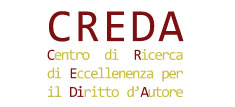Ai Act and Intellectual Property in the Digital Transition Curatori: Mario FRANZOSI, Oreste POLLICINO, Gianluca CAMPUS Prefazione di: Gustavo GHIDINI Postfazione di: Stefano LONGHINI Autori…
The quadrangular shape of the geometry of digitalpower(s) and the move towards a proceduraldigital constitutionalism

The quadrangular shape of the geometry of digitalpower(s) and the move towards a proceduraldigital constitutionalism
Oreste Pollicino
Abstract: The paper explores the evolution of private powers in the digital landscape, developing a quadran-gular systematisation of such a phenomenon based on four main aspects: space, values, (private)actors, and (digital) constitutional remedies. Taking a trans-Atlantic approach, the paper shows howthese categories, typical of constitutionalism, apply to the context of the Internet and of new digitaltechnologies both in the United States and in Europe. On the one hand, the United States has up tonow maintained the supremacy of the notorious Section 230 of the Communications Decency Act.On the other hand, European legislation has undergone a significant change, moving from a phaseof digital liberalism, of which the 2000 e-Commerce Directive is the emblem, towards a new era ofdigital constitutionalism, passing through the age of judicial activism of European courts. In thissense, Europe has increasingly attempted to introduce limits to private (digital) powers, with a viewto better protect and enforce (also horizontally) users’ fundamental rights. Additionally, the evolu-tion of digital constitutionalism, from a vertical-sectoral approach to a horizontal and procedure-based one, significantly showcased by the recent Digital Services Package, is underscored, signallingthe recent movement of the EU into its second phase of digital constitutionalism. In this respect, thepaper argues that the great benefit of stressing the procedural dimension, which may be defined asa European application of“due (data) process”to the relationship between individuals and privatepowers, is that it is potentially able to help consolidate a (necessary) trans-Atlantic bridge.








